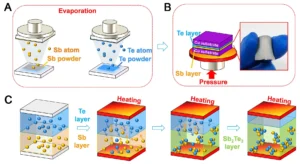Random Access Memory (RAM) is one of the most critical components in any computing system, whether it’s a personal computer, smartphone, or even servers used by data centres. RAM acts as the short-term memory for devices, providing quick access to data that is actively being used. In this blog, we’ll explore the fundamental working principle of RAM and its underlying mechanism in detail.
What is RAM?
RAM, or Random-Access Memory, is a form of volatile memory that temporarily stores data and machine code currently in use by the computer. Unlike other forms of storage like hard drives or SSDs, RAM is designed to be much faster and more efficient at read and write operations. However, RAM is volatile, meaning it loses all stored data when the power is turned off.
The term “random access” refers to the ability to access any memory location directly, in contrast to sequential access memory devices like magnetic tapes, where data must be read in a specific sequence.
Types of RAM
There are several types of RAM, including:
- DRAM (Dynamic RAM): The most common type of RAM. It stores each bit of data in a tiny capacitor, which needs to be constantly refreshed to maintain the data. DRAM is slower but cheaper than SRAM.
- SRAM (Static RAM): A faster and more expensive type of RAM that doesn’t require refreshing. Instead, it uses flip-flops (biostable circuits) to store data. SRAM is typically used in cache memory.
- SDRAM (Synchronous DRAM): A type of DRAM synchronized with the system clock, which makes it faster than traditional DRAM.
- DDR (Double Data Rate) SDRAM: An advanced form of SDRAM, where data is transferred on both the rising and falling edges of the clock signal, doubling the data transfer rate.
For the sake of simplicity, we’ll focus on DRAM and its mechanism in this blog.
The Basic Working Principle of RAM
1. Data Storage in RAM: Capacitors and Transistors
RAM operates by storing data as electrical charges. Each bit of data (a binary 0 or 1) is stored in a tiny capacitor, which is either charged or discharged. This is combined with a transistor, which acts as a switch to control whether the capacitor can be charged or discharged.
In DRAM, the data is stored in a matrix format, consisting of millions (or billions) of tiny cells. Each cell has a transistor and a capacitor, and each row and column of this matrix is connected to specific wires.
2. Reading Data: The Role of Transistors
When data is read from a RAM cell, the process begins by selecting a row of cells using the row address line. A word line (which acts as an activation signal) is sent to a row of transistors, and the corresponding capacitors are connected to the bit lines. If a capacitor is charged, it represents a 1, and if it is discharged, it represents a 0.
The bit line voltage will reflect the charge state of the capacitor, and this voltage difference is then detected by sense amplifiers. The sense amplifiers determine whether the bit line contains a 1 or a 0 and send this information to the processor.
3. Writing Data: Changing Capacitor States
When writing data to RAM, the process is somewhat similar to reading, but with a key difference. To write a value to a memory cell, the capacitor’s charge is modified by applying a voltage to the appropriate bit line. If the desired value is 1, the capacitor is charged; if the value is 0, the capacitor is discharged. The transistor acts as a gate, ensuring that the correct charge is placed on the capacitor.
The process of writing data is typically faster than reading, as only one bit line is involved in the operation, whereas reading requires the use of both the row and column to detect the capacitor’s state.
4. Refreshing: Maintaining Data Integrity
One of the unique features of DRAM is that it requires periodic refreshing to prevent data loss. Since capacitors tend to leak charge over time, the stored data would eventually disappear unless the charges are periodically refreshed.
The refresh process works by re-reading the data from each cell and writing it back to the same location. This keeps the capacitor’s charge intact and ensures that data is preserved for as long as it is needed.
The refresh cycle happens automatically at regular intervals. Modern DRAM chips are designed to handle refreshing without interrupting the device’s operation, though it can lead to minor delays.
RAM Architecture and Data Access
RAM is typically organized in a matrix-like structure, with rows and columns. The data stored within the RAM cells is accessed by selecting a specific row and column, often referred to as row addressing and column addressing. The organization of this memory array helps the system locate data quickly.
1. Address Decoding
When the CPU needs to read or write data, it sends an address to the memory controller. This address is divided into two parts:
- Row Address: This determines the row of the memory matrix.
- Column Address: This identifies the specific bit in that row.
The memory controller is responsible for decoding the address and activating the appropriate row. Once the row is activated, the column address is used to access specific memory locations within that row.
2. Latency and Bandwidth
When discussing RAM performance, two critical terms often arise: latency and bandwidth.
- Latency: This refers to the delay between the request for data and its delivery. It can be impacted by various factors, including memory speed and access time.
- Bandwidth: Bandwidth refers to the amount of data that can be transferred between the RAM and the CPU in a given time frame, often measured in gigabytes per second (GB/s). This is determined by the width of the memory bus and the clock speed of the RAM.
The combination of low latency and high bandwidth ensures that RAM can provide the fast data access needed for modern computing.
Conclusion: RAM’s Vital Role in Modern Computing
In summary, Random Access Memory is a crucial part of any computing device, playing a central role in storing and quickly accessing data that the CPU needs to process. Understanding its working principle, from the mechanism of capacitors and transistors to the process of reading, writing, and refreshing data, gives insight into how RAM contributes to overall system performance.
The speed at which RAM operates directly influences a computer’s ability to handle complex tasks such as gaming, video editing, scientific computing, and much more. As technology progresses, newer generations of RAM continue to push the boundaries of performance, offering faster speeds, greater capacities, and better power efficiency, ultimately ensuring that computing devices can handle the increasingly demanding workloads of modern applications.
Whether you’re upgrading your system or simply curious about how your device works, knowing how RAM functions helps you appreciate the intricate technology that powers your computing experience.




